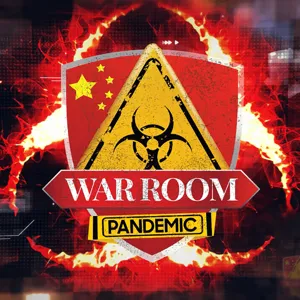By Sinead Murphy at Brownstone dot org.
Imagine that we do not know what blindness is.
Imagine that we describe people as blind very often, but that we do not know what blindness is.
Imagine that blindness is increasing so that, in some districts, three in ten children are diagnosed as blind. But that we do not know what blindness is.
Imagine that we can name many symptoms of blindness. Disinclination to shake hands. Tendency to fall over. Timidity of posture. Slowness of gait. But that we do not know what blindness is.
Imagine that there is posited a spectrum of blindness, including those who sometimes trip on the rug and those who must cling to another person before taking a single step. But that it is not known what blindness is.
Imagine that it is said that blindness may hide itself and affects many people who walk about with the appearance of confidence and respond to facial expression with seeming assurance. But that it is not known what blindness is.
Imagine that the numbers of those who retrospectively interpret their own lives and the lives of others as having been shaped by undiagnosed blindness increase and increase, so rampantly that we are all inclined to understand ourselves and others as at least a little blind. But that we do not know what blindness is.
Imagine that the attribution of blindness so gathers pace that blindness acquires the atmosphere of a natural human condition, a mere difference. But that we do not know what blindness is.
Imagine that strides are made in determining possible causes of blindness - environmental toxins, genetic predisposition, style of upbringing, experience of trauma. But that it is not known what blindness is.
Meanwhile, a small cohort with a blindness diagnosis cleave to the walls of their home, their room, unresponsive to the myriad strategies employed for inclusion of the blind - a small cohort whose tragedy is concealed in the general clamour for blindness; a pitiable few, wrecked and solitary in a darkness wholly overlooked. Because we do not know what blindness is.
The scenario would be implausible were it not real.
We describe people as autistic very often. Autism is increasing; in parts of London, three in ten children are diagnosed with the condition. Almost everyone can name some symptoms of autism: lack of eye contact, tendency to sniff at things, liking for routine, propensity for distress. Autism is understood as a spectrum condition, affecting celebrity achievers and those who cannot speak, dress themselves, or use the toilet.
Autism is said to mask, hiding itself beneath the simulation of functionality. Autism is advertised as a natural divergence, so ubiquitous as to explain aspects of the lives of us all. Autism is attributed to a range of causes, from childhood vaccination to the impersonal routines of metropolitan societies.
Yet we do not know what autism is.
Meanwhile, a not-so-small cohort of young people spin and flap beyond the bounds of sympathy and significance, unable to access the consolations of human life, unable to get in. A not-so-small cohort whose tragedy is obscured by the general enthusiasm for auties; a strange race whose unique forsakenness has no words to speak its name. Because we do not know what autism is.
This cohort of young people is growing and not slowly, relatively unnoticed in the melee of autism-mania except by those charged with the heavy task of supporting it, a task made infinitely more demoralising by widespread innocence about what autism is.
It is beyond time that we try to dispel this innocence.
Why is my 11-year-old son indifferent to the world and those in it, though his mind is alive and his eyes are wide? Why is he able to double large numbers but unable to grasp that subtracting from a number makes it smaller? Why can he learn Wordsworth's 'The Daffodils' by heart while being unable to understand the word 'it?' Why can he not call my attention? Why does he shout 'Mom!' very loudly, though I am right beside him and ...





 View all episodes
View all episodes


 By Brownstone Institute
By Brownstone Institute



















